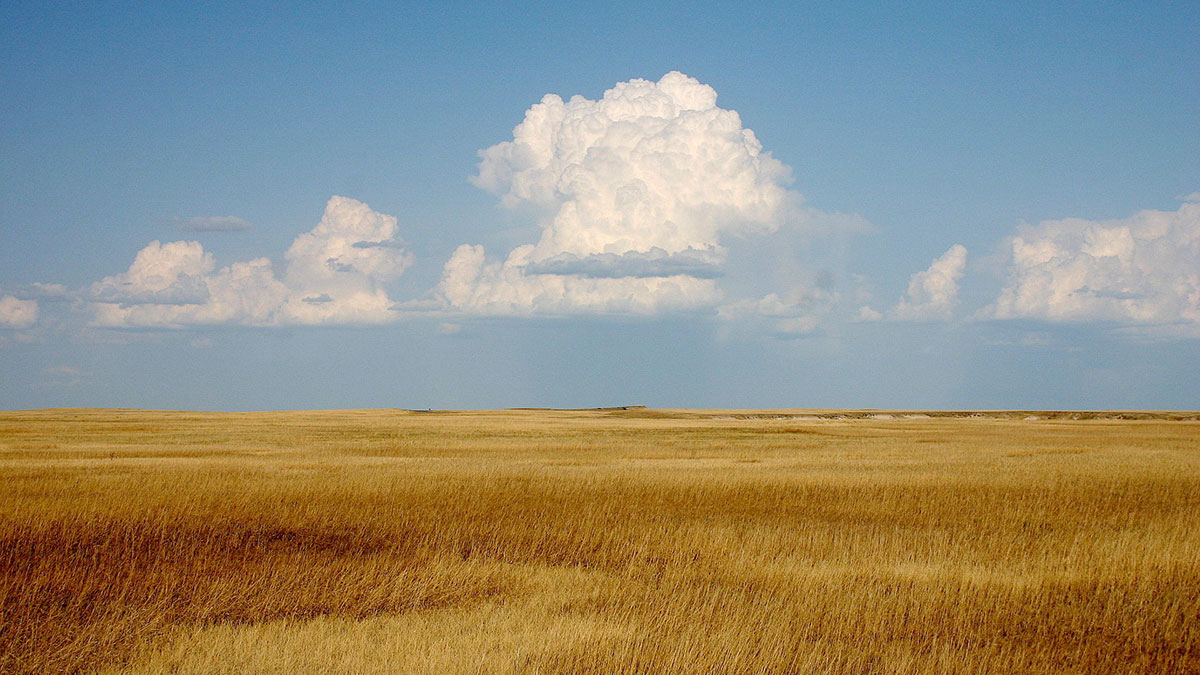“Where Pyramids Collide,” the newest exhibit at the Muttart Conservatory
Marigolds, papyrus, and palm trees transform the Muttart into an ancient Egyptian garden.
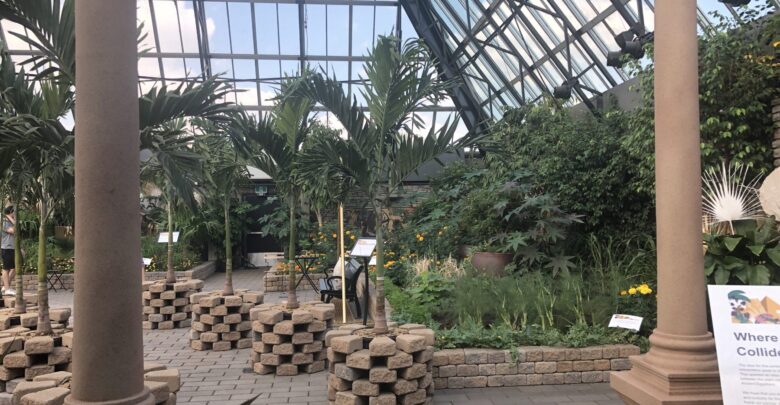 Sanjeet Sandhu
Sanjeet SandhuThe Muttart Conservatory is showcasing its newest exhibition, When Pyramids Collide, in the feature pyramid. The feature pyramid at the Muttart changes seasonally, rotating through several different themes each year. This summer, the pyramid offers a look into the botanical history of ancient Egypt by showcasing gardens, agriculture, and funerary practices.

Outside of the pyramid, artifacts from the University of Alberta’s W.G. Hardy Collection are on display. The exhibit covers one of the most fascinating aspects of Egyptian history — the unique funerary culture. The artifacts on display are representative of common items that were buried in tombs along with the dead, called grave goods. Ancient Egyptians believed that these objects, such as combs and figurines, would help the deceased in the afterlife.
The exhibit also delved into the role that plants played in the mummification process. Embalmers used many different plants, including flax textile, which they used for wrappings.
Many pieces of artwork are on display inside the pyramid. For example, the tunnel leading into the pyramid features inscriptions depicting animals and people. Inside the pyramid, the exhibit includes a plot of farmland showcasing the agriculture of ancient Egypt, as well as the tools used for farming.
Grapes were significant to Egyptians, especially for winemaking. Unfortunately, none of the vines had actual grapes growing on them. As with all of the pyramids at the Muttart, this exhibit features a beautiful collection of plants to enjoy and photograph. As soon as you enter, the abundance of bright marigolds and strawflowers catch your eye.
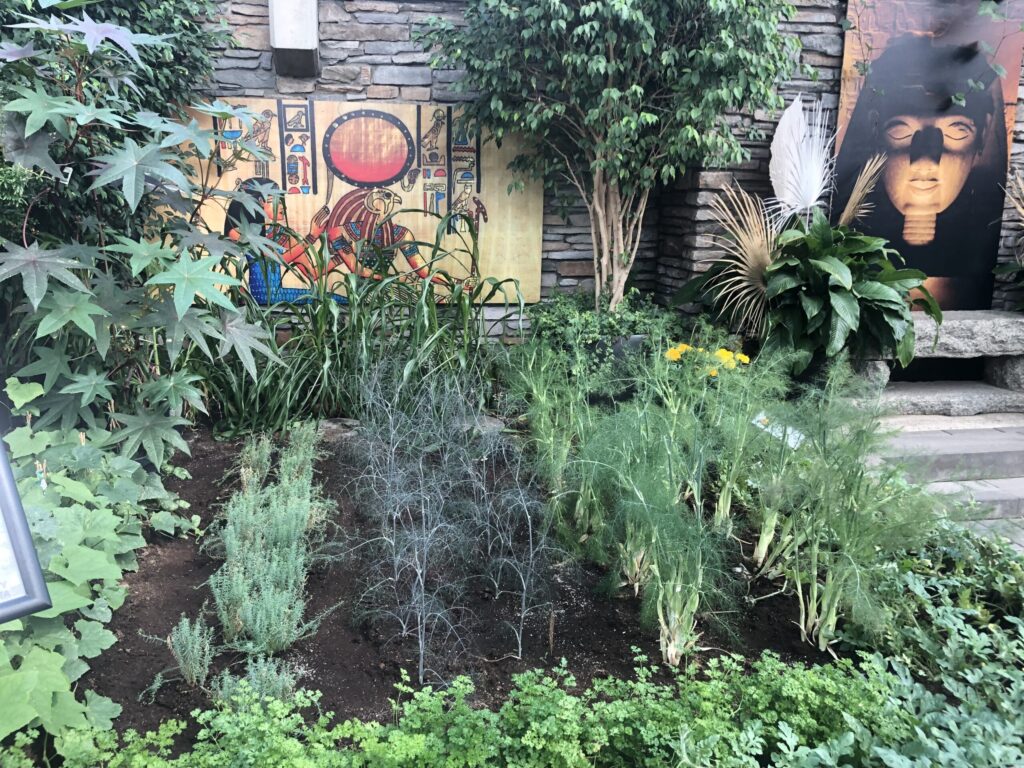
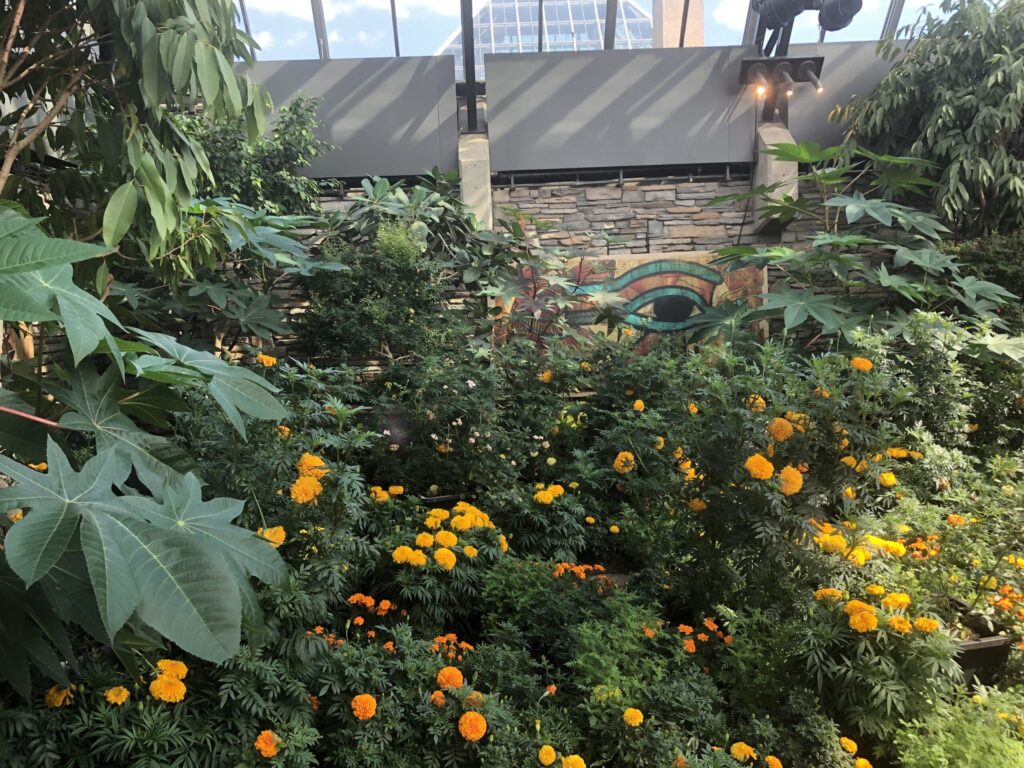
The pyramid includes a winding water feature representing the Nile River, the “lifeblood” of ancient Egyptian civilization. The water, full with papyrus plants and lily pads, leads into a beautiful koi fish pond. The exhibition explains how papyrus plants were essential for Egyptians, especially for the creation of paper. Attendees can try their hand at writing hieroglyphics on scraps of papyrus paper.
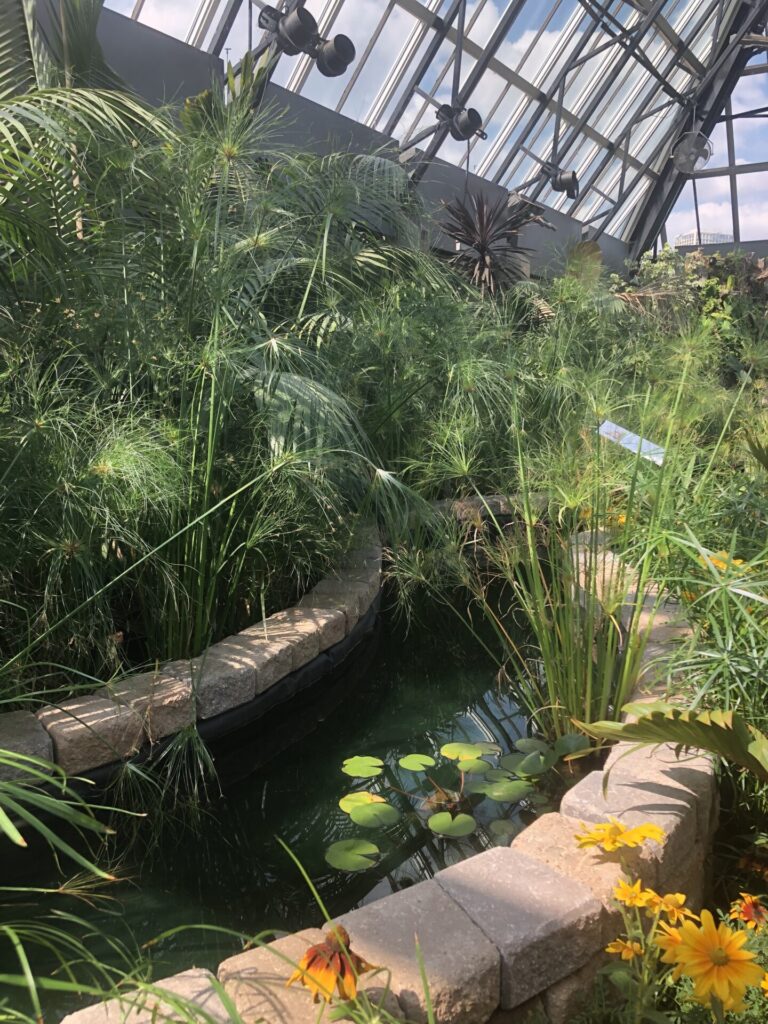
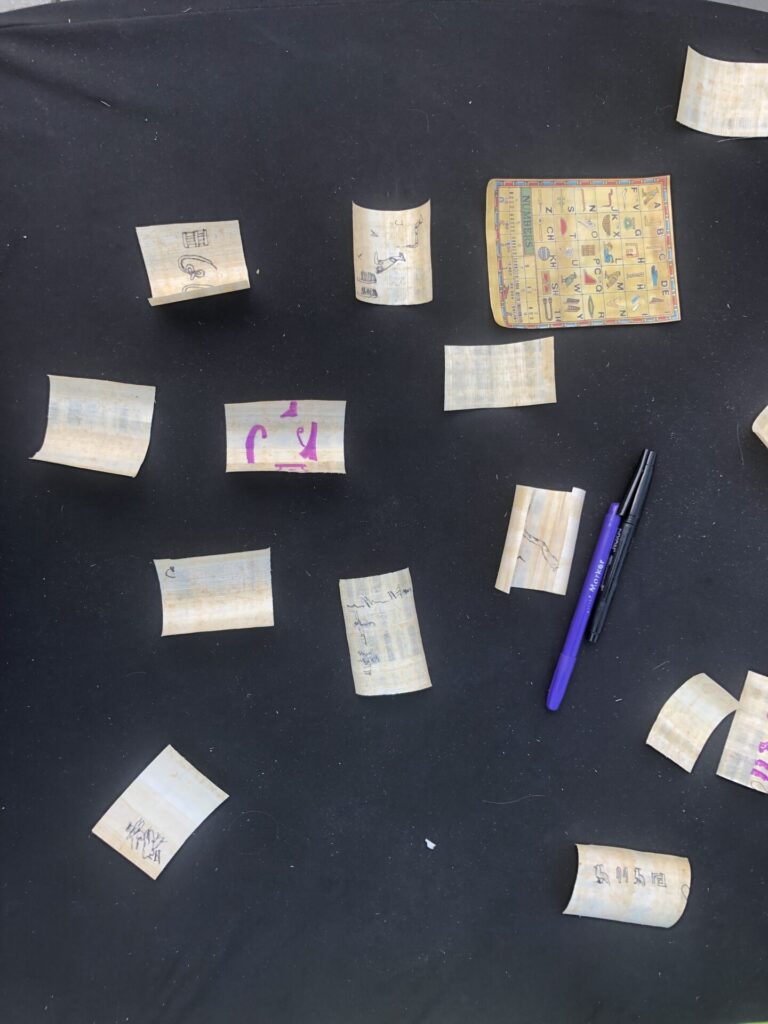
If you’ve already visited the Muttart and seen the other pyramids, it isn’t worth $15 just to see this one. The experience is pretty underwhelming. I wish this exhibit, and the Muttart in general, would incorporate more interactive experiences to bring in more visitors. Currently, I don’t think many Edmontonians visit the Muttart often enough to see the different themes showcased in the feature pyramid throughout the year.
Regardless, Where Pyramids Collide provides a unique perspective. The approach of showcasing history through botany is very refreshing. This exhibit allows you to really experience an ancient civilization by walking through something as simple as its plant life. For this reason, I think that the artifacts on display outside could be better appreciated if they were actually incorporated throughout the pyramid.
Where Pyramids Collide will be on display at the Muttart Conservatory until September 2.




